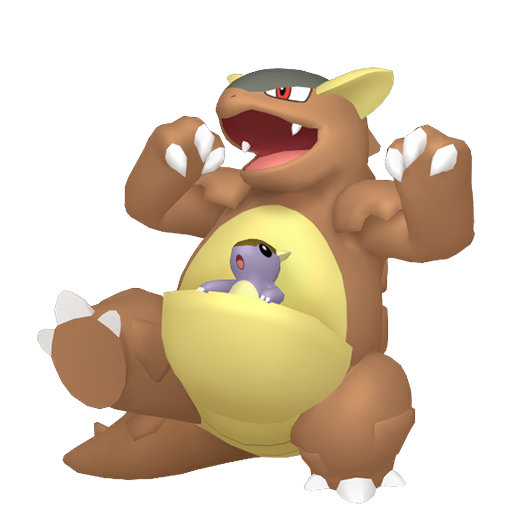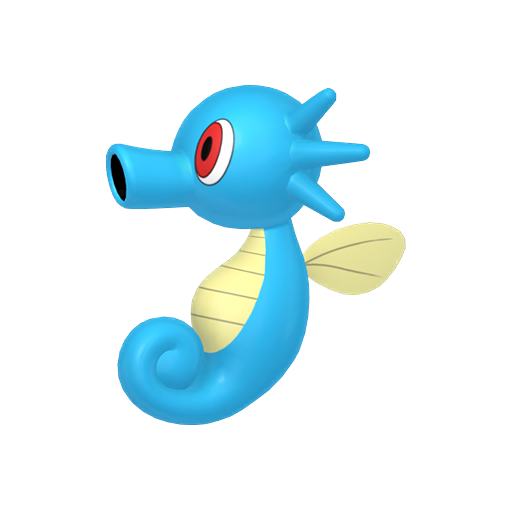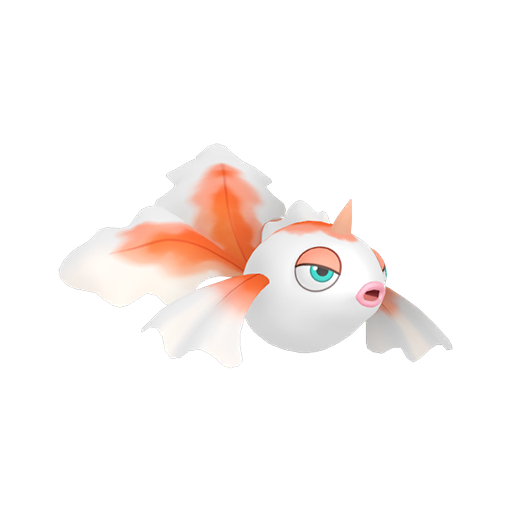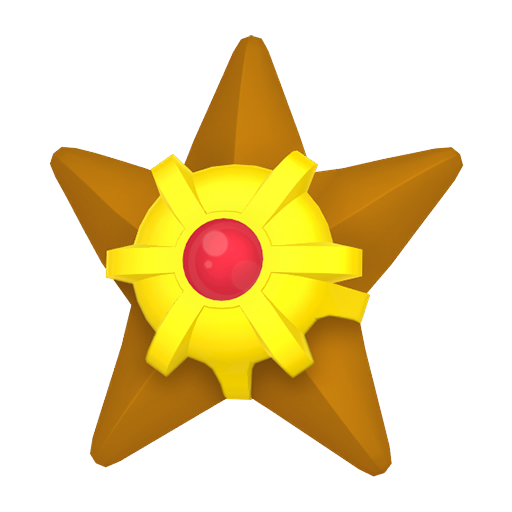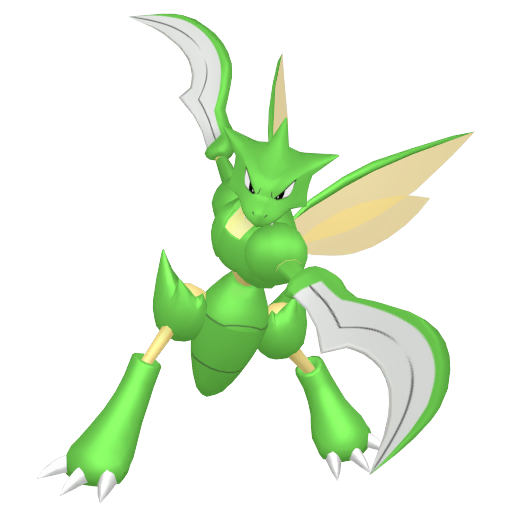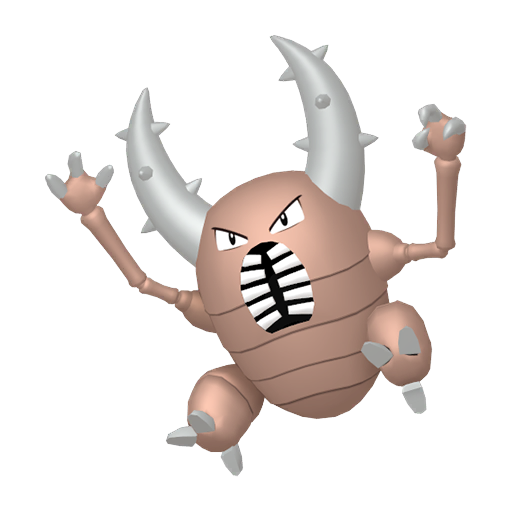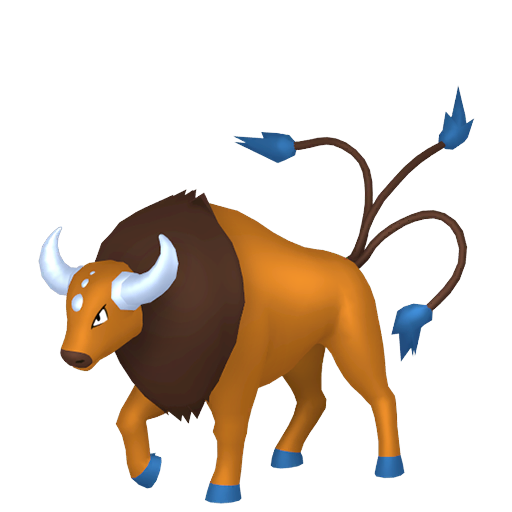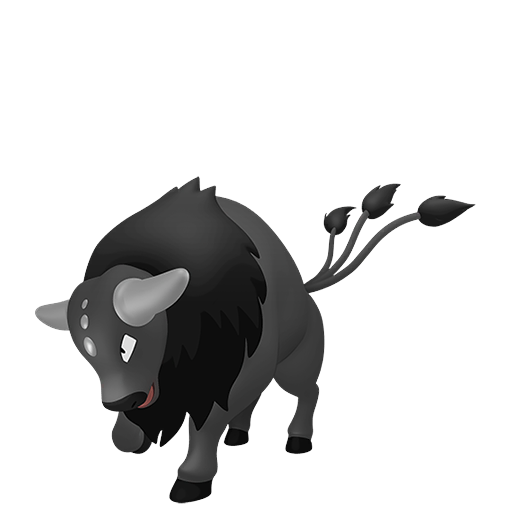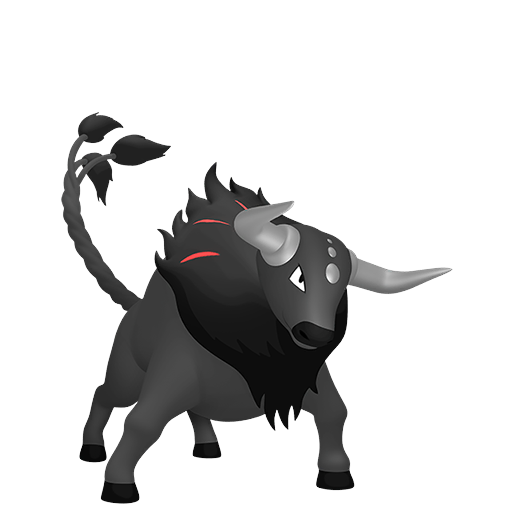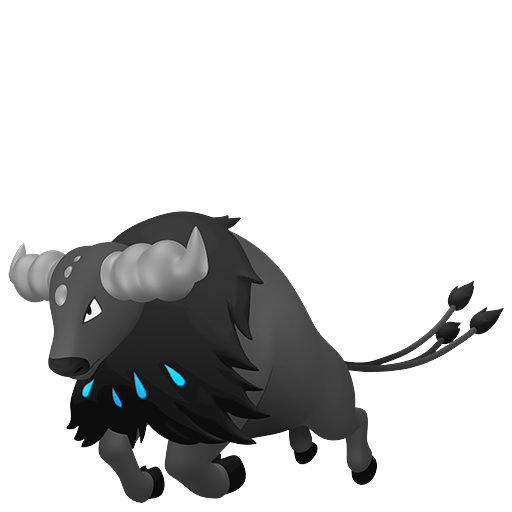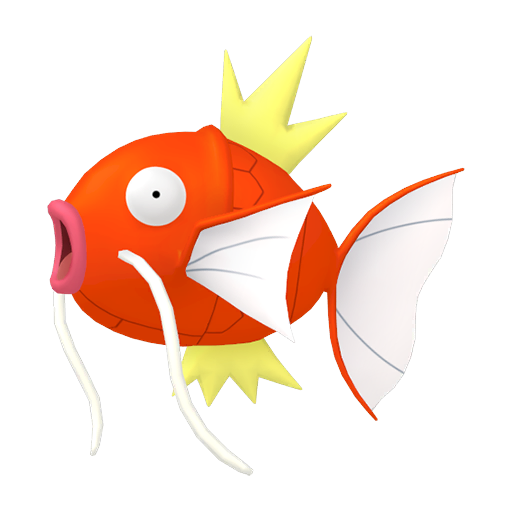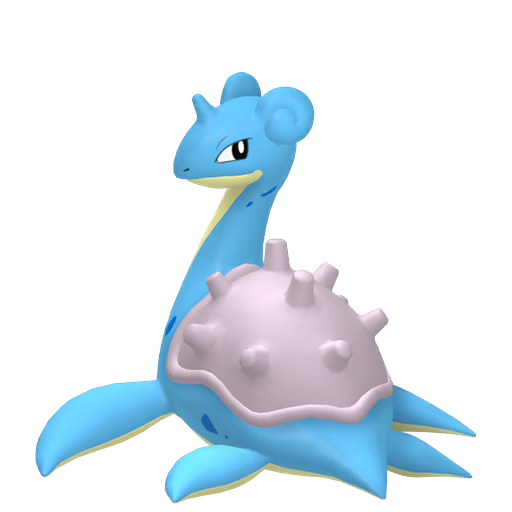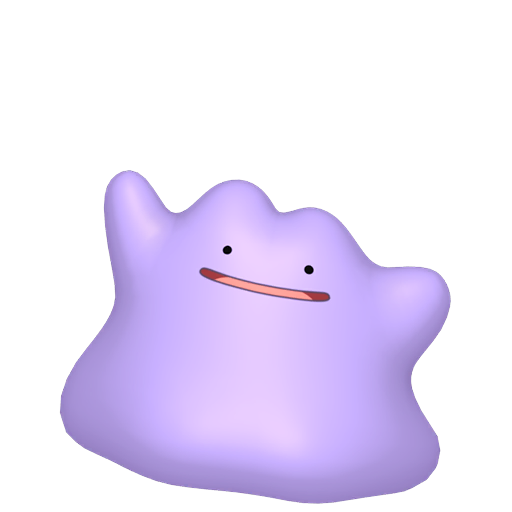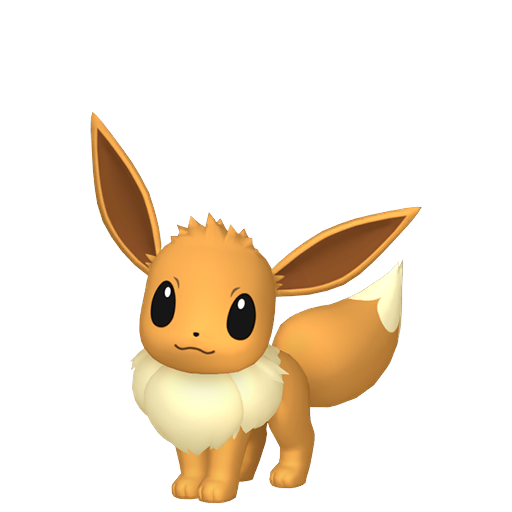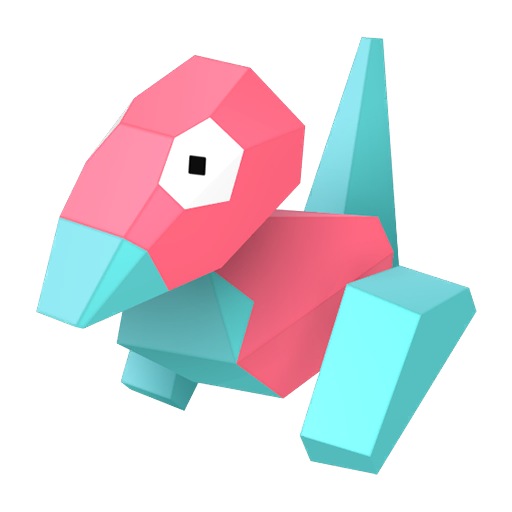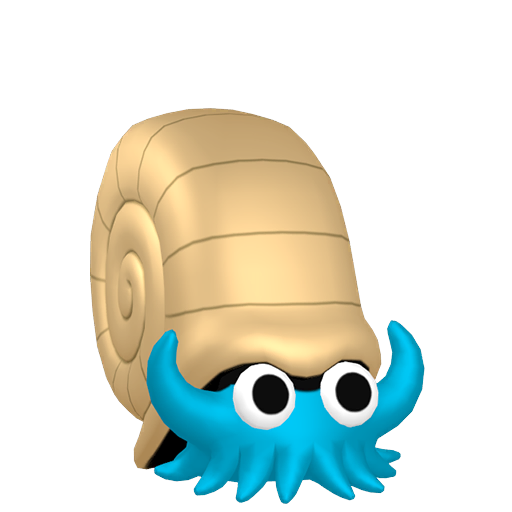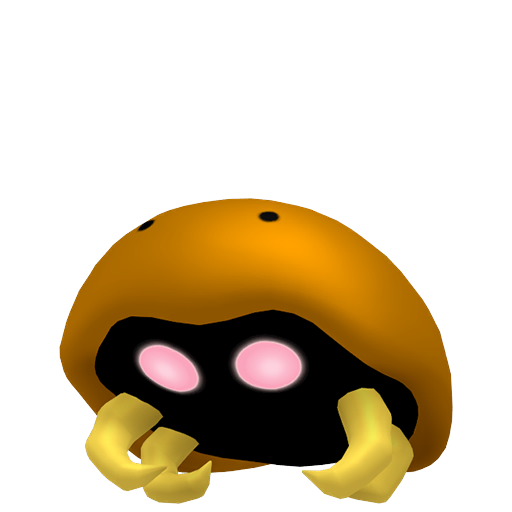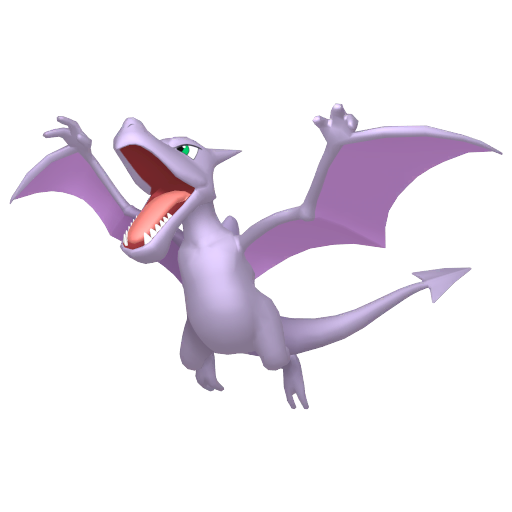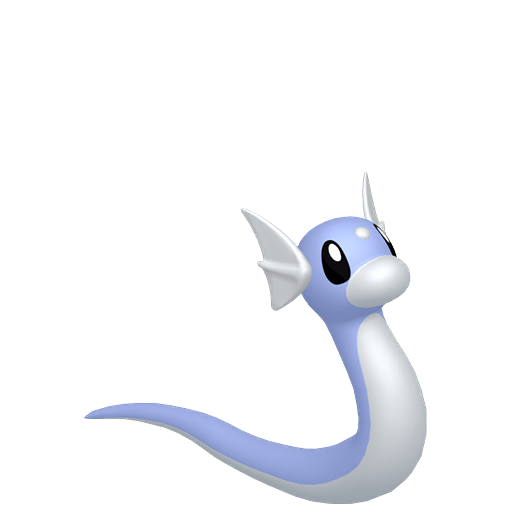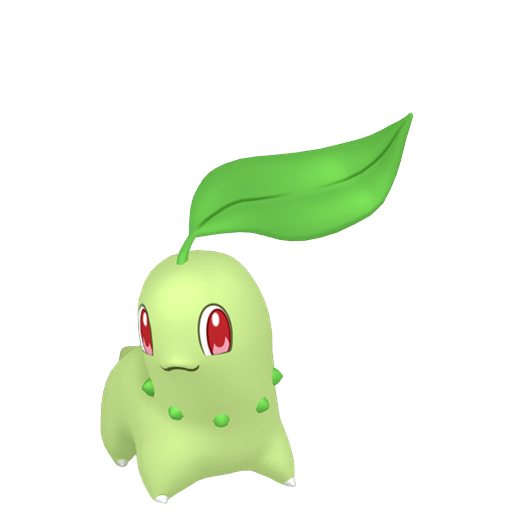Species
#0115 Kangaskhan
Kangaskhan is a large, bipedal marsupial Pokémon that vaguely resembles a kangaroo. It has a brown hide with several raised patches and a cream-colored belly. It has large, cream-colored ears, narrow, red eyes, and a short, rounded snout with two fangs in the back of its upper jaw. On top of its head is a thick, black plate. There are epaulette-like growths over its shoulders and a row of spikes down its back. It has three clawed digits on each hand and foot and a thick tail. On its belly is a pouch that contains a baby Kangaskhan. Unlike its parent, the baby is light purple and has smooth skin.
#0116 Horsea
Horsea is a light blue, piscine Pokémon that is similar to a seahorse. It has red eyes, a long, tubular mouth, and three spike-like fins on either side of its head. Its ridged belly and single dorsal fin are cream-colored. Highly adept in the water, it uses its dorsal fin to swim in any direction while facing forward. It has a tightly curled tail that it can use as both a balance and an anchor when caught in a strong current. In safer environments, it uses its tail to play with other members of its species.
#0118 Goldeen
Goldeen is a white piscine Pokémon with orange markings. It has circular blue eyes with orange lids and prominent pink lips. On its forehead is a large horn, which is larger on a male than on a female. It has a small, wavy dorsal fin surrounded by an orange patch and long pectoral fins with orange markings at the bases. Goldeen's billowing tail fin is orange around the base and turns white toward the edges. Its tail is admired by many for its beauty and similarity to a ballroom dress.
#0120 Staryu
Staryu is a golden-brown, echinoderm Pokémon with five appendages. These appendages surround an exterior organ called the core. The core resembles a golden metal casing with a red gem in the center, which is held in place by a golden ring looped around Staryu's lower left point. If any of Staryu's appendages are lost or eaten by predators like Lumineon, it is unharmed and can grow them back with ease provided the core is still intact.
#0123 Scyther
Scyther is a bipedal, insectoid Pokémon. Its body is primarily green and has a thin, cream-colored section between its head, thorax, and abdomen. Female Scyther have larger abdomens than male Scyther. Its reptilian head has two narrow, triangular eyes and three blunt horns extending from its forehead. Its arms end in large, white scythes, which it uses for both hunting and fighting. Two pairs of cream-colored wings extend from its back. While these wings do allow Scyther to fly, it rarely does so. Scyther's thighs have large, upward-pointing spikes. Its feet are tall, rounded, and conical, almost extending to its thighs; each foot ends in three small, white claws on its front side.
#0127 Pinsir
Pinsir is a bipedal, coleopteran insectoid Pokémon with a wide, dull-brown body divided into segments by thin lines. On top of its head is a large pair of gray, spiky pincers on top of its head. In its mouth are many long, flat teeth arranged horizontally and it has triangular eyes. Capable of seeing color to some degree, Pinsir appears to be attracted to the color green. Its legs are short and thick, while its arms are long and thin. It has three claws on each hand and foot; two of its toes face forward and one backward.
#0128 Tauros
Tauros is a quadrupedal, bovine Pokémon. It is covered in light brown fur with a thick, darker brown mane around the neck. It has a rounded muzzle with a dark brown nose, small, triangular eyes, three gray bumps running vertically down its forehead, and a pair of curved, gray horns growing from atop its head. Each of its three black tails has a tuft of fur on the end, and there is a single gray hoof on each foot.
#0128-1 Paldean Tauros (Combat)
The Combat Breed of Paldean Tauros has short, rounded, almost straight horns, and its mane and tails are shaped similarly to Kantonian Tauros. Combat Breed Paldean Tauros is known for its thick, powerful muscles and aggressive nature. Thanks to its muscular body, it is skilled at close-quarters combat, able to use its horns to strike at an opponent's weak spots.
#0128-2 Paldean Tauros (Blaze)
The Blaze Breed of Paldean Tauros has sharp horns, pointing forward and bent at right angles. Its mane is spiky with streaks of red, and its tails are intertwined. Blaze Breed Paldean Tauros earns its name from the hot air it breathes from its nostrils. When channeling its fire energy, the bumps and horns on Blaze Breed Paldean Tauros's head will glow red. The horns can reach a temperature of over 1,800 degrees Fahrenheit (1,000 degrees Celsius), causing anyone gored by them to suffer both wounds and burns.
#0128-3 Paldean Tauros (Aqua)
The Aqua Breed of Paldean Tauros has horns that usually point upward but can rotate backward — each horn has two round, bulbous forms and a hole on its tip. Its mane flows downward and is shaped like a beard, with five teardrop-shaped blue accents on it. Its tails are usually straight, but can bend to form a propeller shape, which aids it in swimming. Aqua Breed Paldean Tauros is recognized for its high body fat, which allows it to float easily in the water. It swims by unleashing high-pressure jets of water from its horns, as well as using its tails to propel itself. It can use the same water jets to pierce right through any enemy it hits. The bumps and horns on Aqua Breed Paldean Tauros's head will glow light blue when it attacks.
#0129 Magikarp
Magikarp is a piscine Pokémon with large, heavy reddish-orange scales. It has large, vacant eyes and pink lips. Its pectoral and tail fins are white. On its back is a stiff, three-peaked yellow fin, resembling a crown; there is an identical fin on its underside. It also has long barbels. The barbels are white on a female and pale-yellow on a male. A long-lived Magikarp is able to utilize its immense splashing power to leap high enough to scale mountains. It also has a strong enough immune system to survive in the most polluted of waters.
#0131 Lapras
Lapras is a marine reptilian Pokémon that resembles a plesiosaur. It has a blue hide with darker blue spots and a cream-colored underside. It has large brown eyes, a short horn on its forehead, and tightly curled ears. It has a long neck and four flippers. The foremost flippers are larger than the hind. On its back is a heavy, gray shell covered in blunt knobs.
#0132 Ditto
In its natural state, Ditto is a light-purple or pink blob-like Pokémon with vestigial facial features. It is often referred to as amorphous, but has a relatively consistent appearance in official artwork, including two small nubs on its "head", a few soft lumps at its base, and two pseudopod-like protrusions in place of arms. The face consists of beady eyes and a simple mouth; almost always pulled into a smile.
#0133 Eevee
Eevee is a small, mammalian, quadrupedal Pokémon with primarily brown fur. The tip of its bushy tail and its large furry collar are cream-colored. It has short, slender legs with three small toes and a pink paw pad on each foot. Eevee has brown eyes, long pointed ears with dark brown interiors, and a small black nose.
#0137 Porygon
Porygon is an artificial Pokémon made completely out of programming code. It has a pink, polyhedral head that ends in a blue beak and has hexagonal eyes, and it has a pink polyhedral body with a blue front, blue triangular prism feet, and a blue rectangular prism tail. According to its Pokédex entries, it has copy protection built into its code, preventing duplication through electronic means. It was created in 1995 by Silph Co., but documents at Silph Co. claim it was created at the Pokémon Lab on Cinnabar Island using the state-of-the-art technology of its time. Because it was created decades ago, many of its parts have since become obsolete. It was the first artificial Pokémon to have ever been created through computer programming. In ancient Hisui, people were confused about Porygon and its evolutions due to them arriving through space-time distortions and being the product of far more advanced technology than what was available at the time.
#0138 Omanyte
Omanyte is a small extinct cephalopod mollusk Pokémon similar to an ammonite or nautilus. It has a sky blue body with ten tentacles and a pale yellow, helix-spiraled shell on its back. The shell's rim has two circular indents where Omanyte's large saucer-like eyes protrude. If attacked or threatened, it quickly withdraws into its hard shell.
#0140 Kabuto
Kabuto is a small arthropod Pokémon resembling a horseshoe crab. It is mostly flat with a protective, brown shell covering its body. There are two small, black eyes on top of its shell, which it uses for sight when it hides on the ocean floor. Underneath the shell is a black space that hides the structure of its main body. Only its four short, yellow legs and a second pair of luminescent red eyes are visible on its underside. In its original time, Kabuto was prominently found on beaches, likely aided by its fast and powerful swimming ability. While it is commonly believed to be extinct, isolated populations of Kabuto have been unchanged for 300 million years.
#0142 Aerodactyl
Aerodactyl is a reptilian, bipedal prehistoric Pokémon that resembles a pterosaur with several draconic features. It has small sharply pointed ears, narrow dark green eyes, a ridged snout, a gaping mouth, and a strong lower jaw full of serrated fangs. Its body is covered in light blue-gray skin and it has large, violet membranous wings. The clawed hands at the end of each wing allow it to grasp objects. There is a hump-like ridge with a spike on its back, and it has a strong tail with an arrow-shaped tip. Its talon-like feet have two toes in front and one in the back, and are capable of scooping up and tightly clutching its prey in flight.
#0147 Dratini
Dratini is a reptilian Pokémon with a blue serpentine body and a white underside. It has white, three-pronged fins on the sides of its head and a white bump on its forehead, which is its horn growing. Above its round, white snout are oval, purple eyes.
#0152 Chikorita
Chikorita is a small, pale-green, quadrupedal Pokémon with dark-green buds around its neck. Its head is large in proportion to the rest of its body, and it has big red eyes. Chikorita has four short legs with a single nailed toe on each and a stubby tail. On top of its head is a large, green leaf that is usually longer than its body.
